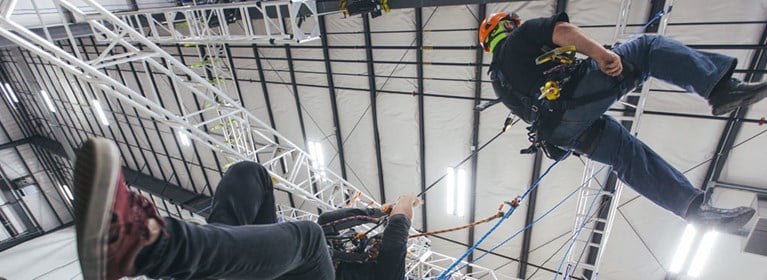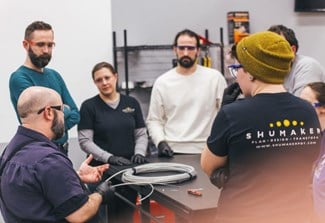
Does your Overhead Crane Meet OSHA Regulations?
Crane Systems | By Tom Reardon | Sep 02, 2014

Jason, an Assistant Manager with one of our Channel Partners, asks:
“I received a call from a customer for whom I had conducted an inspection. The customer stated they received an OSHA reprimand for not having monthly inspections on their cranes. They have 2 top-running bridge underhung trolley-type cranes. OSHA referenced 1910.179 J2IV and 1910.179 B1 as the violations.
In the book I have, 1910.179 B1 states that ‘this section applies to overhead and gantry cranes, including semi gantry, cantilever gantry, wall cranes, storage bridge cranes, and the others having the same fundamental characteristics. These cranes are grouped together because they all have trolleys and similar travel characteristics.’
Are the references for the reprimand accurate?”
Our training team answers:
Some confusion exists among crane and hoist owners, users and service providers regarding crane configurations and the application of Federal OSHA 1910.179 regulations. Some of this confusion may be caused by the first definition in 1910.179 – (a)(1): “A “crane” is a machine for lifting and lowering a load and moving it horizontally…” Because all overhead crane configurations fit this definition to one degree or another, we tend to lump them together and assume that all are subject to these regulations. This is not the case. We wrote an article on the subject entitled “Does OSHA 1910.179 apply?” To read the full article, go here.
A second resource we want to share with you consists of two OSHA interpretations:
Interpretation #1: Click here
Interpretation #2: Click here
Each interpretation makes it quite clear that OSHA 1910.179 does not apply to the crane types you describe. For OSHA to prevail on a General Duty Clause, which they have not cited, they would have to prove or establish risk of serious injury or death. If the operators are doing proper daily pre-operational inspections, or even inspections once per month, they are covered. These “Frequent Inspections” do not have to be documented. (ASME B30.17 & B30.16.)
ASME B30.16 covers the underhung hoist and the “hoist chains” cited in 1910.179(j)(iv). In short, OSHA doesn’t apply.
Below are some additional resources related to this topic:
- Safety Webinar: Overhead Crane & Safety Training Audit for Managers, Supervisors & Safety Professionals
- Overhead Crane Inspection & Operator Training Classes
Disclaimer:
This blog post is our training team's opinion of the interpretation of the relevant sections of OSHA. The reader should seek a legal opinion.
Columbus McKinnon Training
Articles authored by "Columbus McKinnon Training" were written by industry professionals with decades of unique and in-depth experience in the material handling industry who are no longer employed by Columbus McKinnon.




 North America - EN
North America - EN


